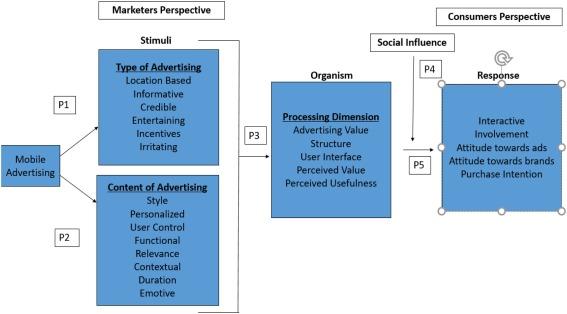Mindfulness in Education: Transforming Learning and Student Well-Being
the modern educational landscape is rapidly evolving, facing new challenges in student engagement, mental health, and academic performance. Among innovative strategies, mindfulness in education has emerged as a powerful tool, not just to support academic learning, but also to foster student well-being, resilience, and social-emotional growth. This comprehensive guide explores how integrating mindfulness into educational environments can transform learning outcomes and create a positive school culture.
What Is Mindfulness in Education?
Mindfulness is the practise of paying attention, on purpose, and without judgment, to the present moment. When brought into classrooms, mindfulness practices help students (and educators) tune in to their thoughts, emotions, and sensations, enabling better self-regulation and focus.Over the past decade,integrating mindfulness in schools has shifted from being a wellness fad to a research-backed approach that enhances both learning and holistic progress.
Why Mindfulness Matters in the Classroom
With increasing academic pressure and rising rates of anxiety and stress among students, educators are searching for practical solutions to support mental health and create calmer environments. Here’s why mindfulness is essential in schools:
- Improves Focus: Mindful practices help sharpen attention and reduce distractibility.
- Supports Emotional Regulation: Students learn to recognize and manage challenging emotions.
- Reduces Stress: Mindfulness techniques have proven effective in lowering levels of anxiety and classroom burnout.
- enhances Academic Performance: Better focus and emotional stability contribute to improved learning outcomes.
- Fosters Compassion and Connection: A mindful classroom promotes empathy,kindness,and better peer relationships.
Benefits of Mindfulness in Education
integrating mindfulness into the school curriculum brings transformative outcomes for students, educators, and the broader school community.
For Students
- Boosts Academic Success: Regular mindfulness practice correlates with improved reading comprehension, mathematical ability, and cognitive performance.
- Strengthens Mental Health: Students report fewer symptoms of depression and anxiety, enhanced self-esteem, and a greater sense of well-being.
- Promotes Social Skills: Mindfulness nurtures empathy,patience,and better conflict-resolution skills.
For Educators
- Reduces Teacher Burnout: Teachers practicing mindfulness experience lower stress levels and higher job satisfaction.
- Improves Classroom Climate: Mindful educators create more harmonious,inclusive classroom environments.
For School Communities
- Enhances School Culture: A mindful approach promotes respect, inclusiveness, and a sense of belonging.
- Decreases Behavioral Problems: Schools integrating mindfulness often report fewer disciplinary incidents and improved student interactions.
How to Integrate Mindfulness into education: Practical Tips
Bringing mindfulness to the classroom doesn’t require complex tools or a huge time commitment. Here are actionable strategies to start today:
1. Begin with Mindful Breathing
A simple technique like mindful breathing sets a calming tone and helps students reset. try dedicating 2-3 minutes at the start or end of each day:
“Let’s close our eyes or look at our desks, take a deep breath in, feel our belly expand, and gently breathe out. Notice how the breath feels.”
2. Use Short mindfulness Activities
- Body Scan: guide students to scan their bodies, noticing sensations from head to toe.
- Mindful Listening: Play nature sounds or a ringing bell, inviting full attention to the sound.
- Gratitude Sharing: Encourage students to share somthing they’re grateful for each week.
3. Embed Mindfulness in Curriculum
Mindfulness can be woven into literacy, physical education, or even mathematics. For example, pausing for a mindful minute before a test or practicing mindful movement during PE helps make mindfulness a regular routine.
4. Create a Mindful Environment
- Reduce Clutter: A tidy, calm classroom invites clarity and focus.
- Mindfulness Corners: Set up a quiet area with soft lighting, cushions, or coloring materials for students needing a break.
5. Participate in Mindfulness Programs
Numerous evidence-based programs such as MindUP, Inner Explorer, and Calm Classroom provide practical curriculums and resources for schools.
Case Studies: Mindfulness in Action
Case Study 1: Inner Explorer in Ohio Public Schools
In Ohio,a group of public elementary schools incorporated the Inner Explorer mindfulness audio program.After 10 weeks:
- Students’ reading and math scores increased by 15%.
- Teachers reported a 43% reduction in behavioral problems.
- Student attendance improved considerably.
Case Study 2: MindUP in Vancouver, Canada
The MindUP program, implemented district-wide, led to:
- Enhanced emotional awareness and resilience among students.
- Improved peer relationships and a notable reduction in classroom conflict.
- Teachers felt more positive and equipped to handle student emotions.
First-Hand Experience: A Teacher’s Outlook
“In my fifth-grade classroom, introducing a three-minute mindfulness break after lunch dramatically lowered disruptive behavior and boosted afternoon productivity. Even reluctant students started requesting our ‘pause moments’ before big tests. Mindfulness has truly become our secret to a calmer, happier class.”
— Sarah K., Elementary School Teacher
Overcoming Challenges in Implementing Mindfulness
While the benefits are significant, educators may face barriers to integrating mindfulness in education. Here’s how to address common challenges:
- Time Constraints: Start small with short, consistent practices rather than lengthy sessions.
- Lack of Training: Seek professional development workshops or online courses to gain confidence.
- Student Resistance: Normalize the practice by modeling mindfulness yourself and making activities engaging and age-appropriate.
- Parent and Community Buy-in: Share research, stories of impact, and invite families to participate in mindfulness events.
measuring the Impact: Research Evidence
- Harvard University Study (2016): Found that students who participated in daily mindfulness activities had stronger executive functions and fewer conduct problems.
- Mindfulness in education Research Highlights: According to the Mindful Schools, schools practicing mindfulness report up to a 60% decrease in discipline referrals and significant improvements in emotional regulation.
Conclusion: The Future of Mindfulness in Education
As education systems strive to nurture well-rounded, emotionally intelligent students, mindfulness in education stands out as an evidence-based approach with lasting impact. By fostering self-awareness, compassion, and resilience, mindfulness promotes both academic success and holistic student well-being. Whether you’re an educator, administrator, or parent, introducing and supporting mindfulness initiatives can transform classrooms into communities where every student feels seen, heard, and empowered to thrive.

